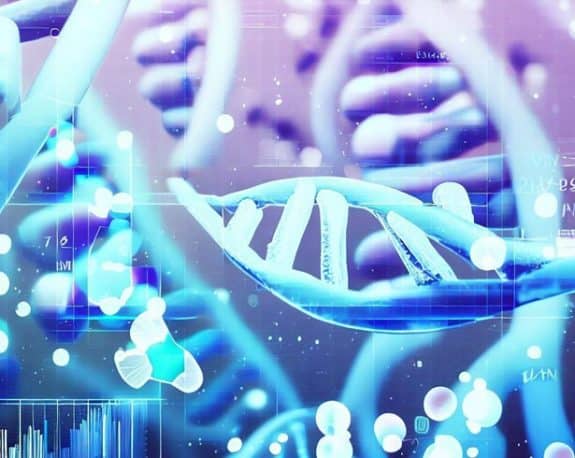
Multiomics Services
The Goals of Multiomics
Technological advancements in genomic sequencing and proteomic analyses are not only improving sensitivity, specificity, throughput, and resolution (down to the single cell level) but also minimizing labor, time, and sample volume requirements. This allows what was previously considered impossible to be possible. Multiomics-based integration of multiple methods as a source of high-throughput data provides a comprehensive dataset of research aims and discovery science as a whole. Recent multiomics studies have advanced personalized medicine, drug development, and the understanding of complex diseases by combining multiple levels of molecular information.
Multiomics Discovery Workflow
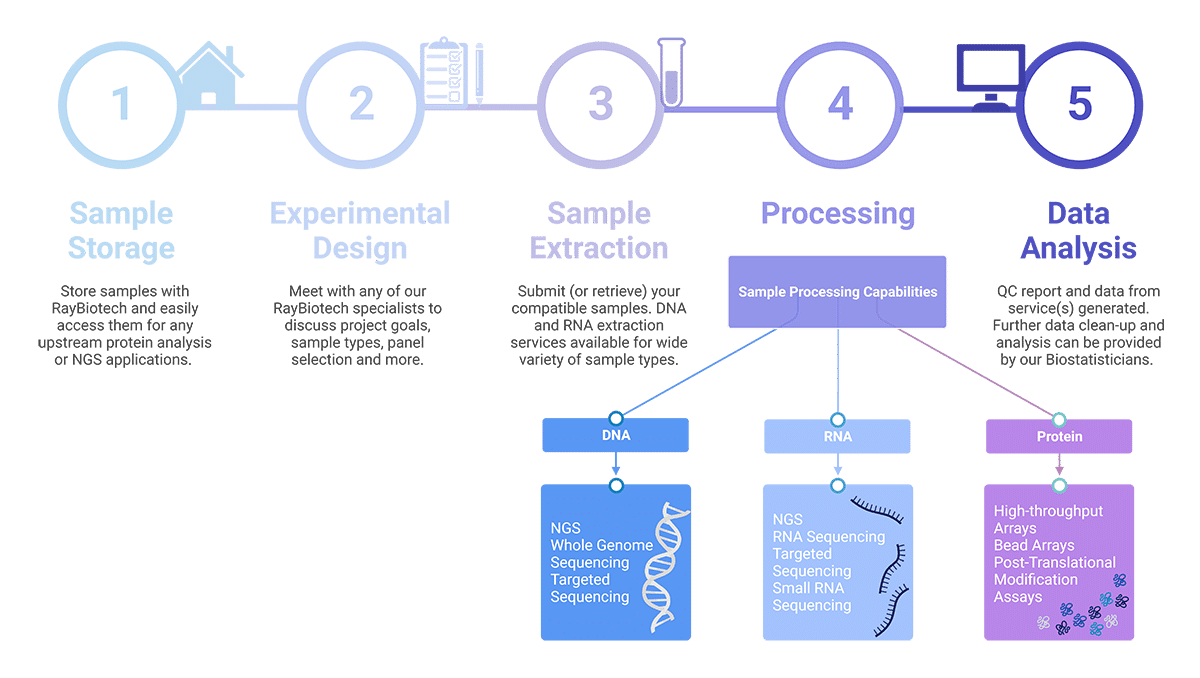
Send Us Your Samples, We'll Send You Results
Genomics analysis of the DNA template can provide a static ‘blueprint’ view of genes and genetic variants. Transcriptomics can reveal the extent to which each gene is ‘on’ or ‘off’ within a cell, providing a more dynamic view of what can change under different conditions. Proteomics analysis, including post-translational modifications like phosphorylation and glycosylation, are essential in maintaining cellular structure and function and identification of the presenting phenotype.
RayBiotech's unmatched array technology and expertise makes it possible to identify, track, and map genomic, transcriptomic, and proteomic data including DNA, RNA, and protein expression, phosphorylation, and glycosylation of more than 8000 analytes across hundreds of biochemical pathways. Additional PTM analyses like oxidation, nitrosylation, etc are also available upon request. Our wide portfolio of genomic, transcriptomics, and proteomic solutions fits the discovery needs of both small and large projects. By combining our 2-dimensional, individual technologies into a 3-dimensional perspective of your research, we can produce a multiomic insight into health and disease.
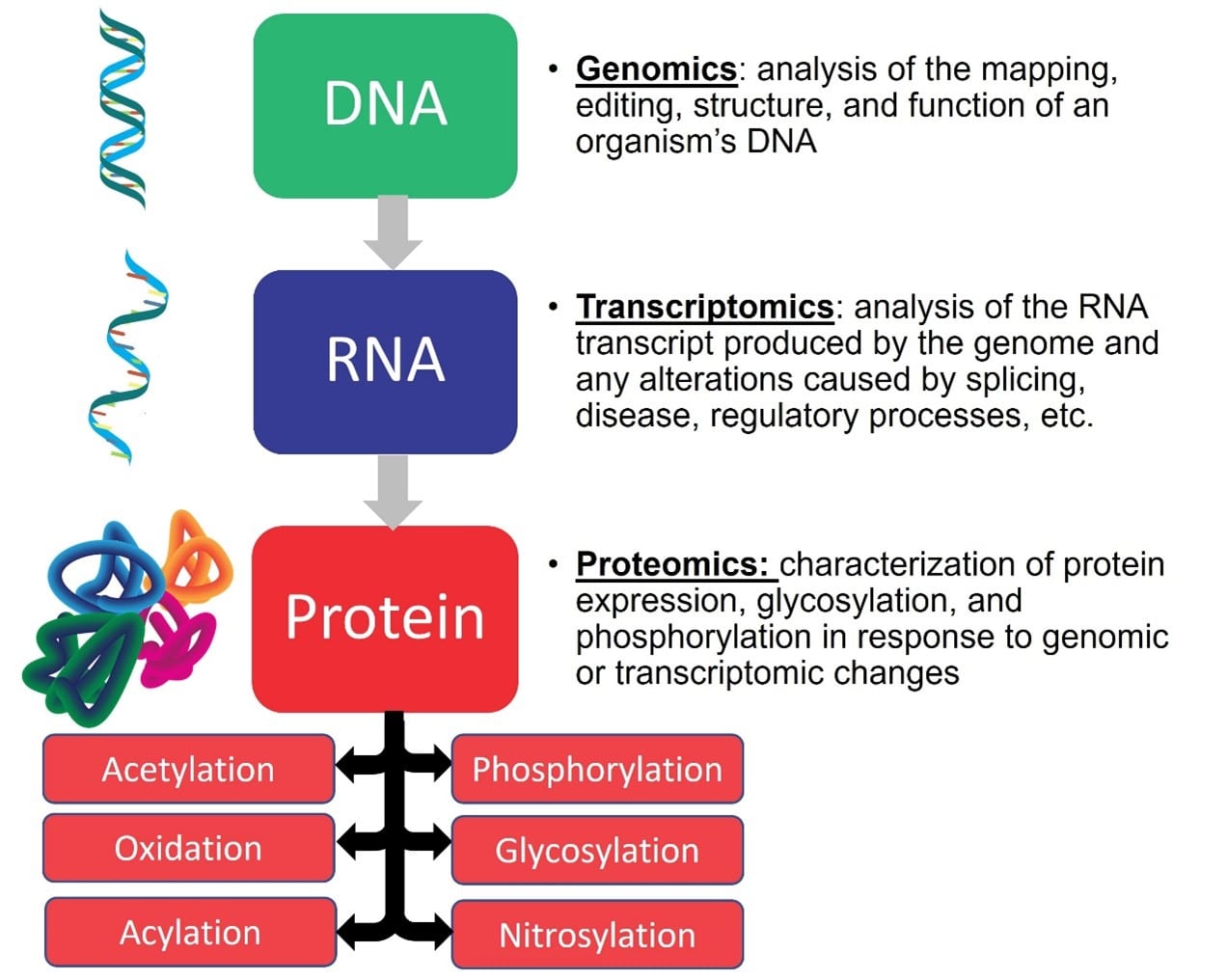
RayBiotech utilizes tools from Genomics, Transcriptomics, and Proteomics to investigate molecular connections and gain multiomic insights.
>50 million
Next Generation Sequencing
DNA
>100 ng
20 million
RNA-seq
RNA
>500 ng
Biostatistics & Bioinformatics Analysis Service
Why should you consider our in-house biostatistics and bioinformatics experts to analyze your array data?
Careful analysis of array data is crucial to accurately identify differences between samples. However, not everyone has the necessary expertise or resources to effectively process and analyze this data. Our biostatistics and bioinformatics experts can provide customized analyses for both genomics and proteomics data, as well as help with experimental design. By leveraging our expertise, you can obtain the most valuable insights from your array data.
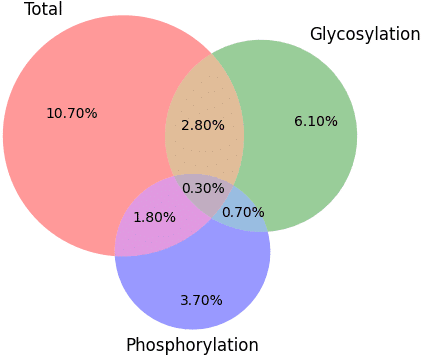
Distribution of differentially-expressed targets on 3 multiomic arrays. The RayBiotech differential expression alanysis service identifies the proteins that are statistically significant between different groups of samples.
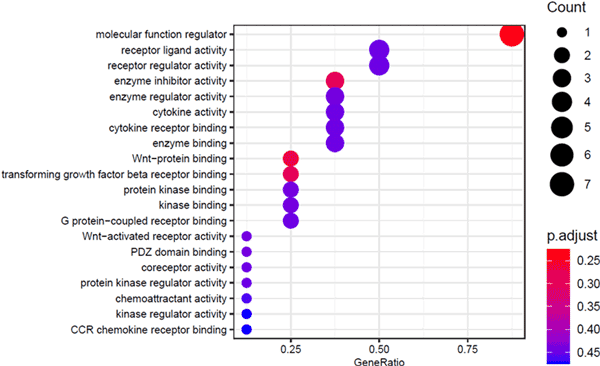
GO molecular function over-representation analysis with 8 differentially expressed biomarkers targets differentially-expression in all 3 arrays. The RayBiotech pathway analysis identifies the specific protein functions, biological pathways, and physical interactions that are enriched in a particular group.
Our Differentiators
Cited in more than 8,000 peer-reviews publications, our proven technology has enabled thousands of researchers to make novel discoveries that help advance scientific research globally.
Our cutting-edge technologies provides high sensitivity and specificity across platforms.
On average 2-3 weeks from receipt.
We are a CRO that offers collaboration and customization to generate unique, tailored solutions for successful outcomes.
Discuss your project requirements
Frequently Asked Questions
Still have questions?
Most of our arrays are compatible with any biological fluid. This includes cell culture media, cell lysates, tissue lysates, and all clarified body fluids (serum, plasma, urine, cerebrospinal fluid, BAL, saliva, tears, etc.) However, it's important to note that for genomic analysis using Next Generation sequencing, samples with DNA are required, while for transcriptomic analysis using RNA sequencing, samples with RNA are required.
Please see our Instructions for Sending Samples resource page.
The required sample volume varies based on the type of analysis being conducted and the specific application. Generally, we recommend using more than 100 ng of sample for next-generation sequencing, over 500 ng for RNA sequencing, and 160 ul of lysate with a concentration of more than 200 ug/mL (80 ul serum, plasma, media) for immunoassays.
Still have questions?